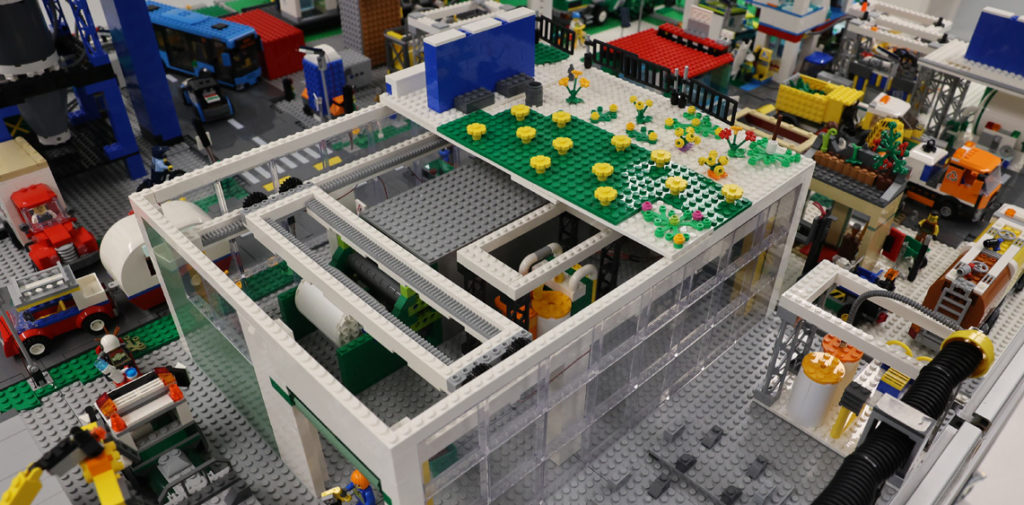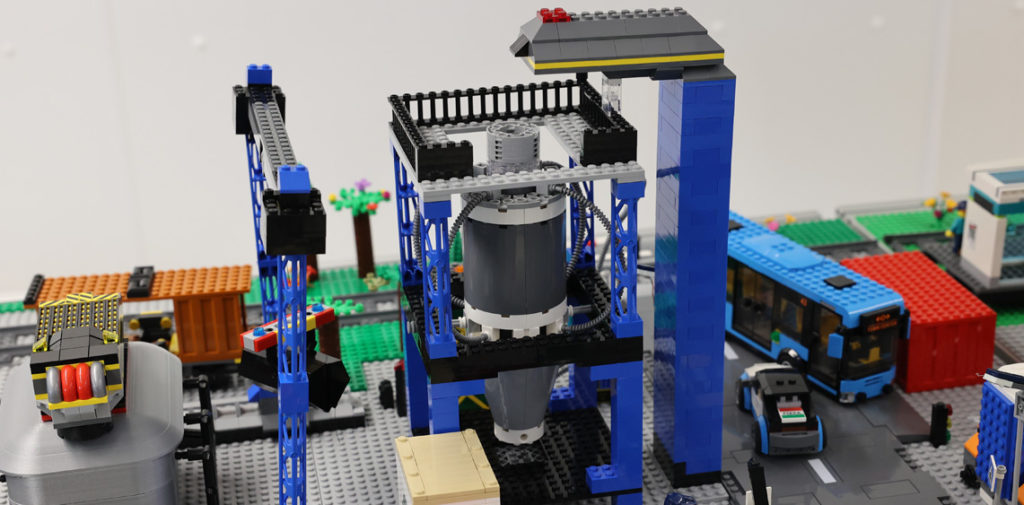Demonstration Facilities as
Lego Model

HECTOR
Europe’s first and biggest industrial-scale hydrogen storage facility, which uses benzyl toluene as a storage medium, is being built at Chempark Dormagen. The project known as HECTOR aims to store five tonnes of green hydrogen in a storage liquid known as a liquid organic hydrogen carrier (LOHC). The project partners are using benzyl toluene as an LOHC.
The green hydrogen is produced on site as a by-product of chlorine and sodium hydroxide (caustic soda) production by means of chlorine-alkali electrolysis.
In the HECTOR project, hydrogen is stored in the carrier liquid and subsequently transported from Dormagen to the Port of Rotterdam where the hydrogen is then released and used as an energy source. The heat generated during the loading process in Dormagen is integrated into the chemical park’s steam network.
Forschungszentrum Jülich is responsible for the accompanying scientific research within the project and predominantly focuses on issues related to the identification, separation, and effects of impurities and their influence on the loading process as well as possible causes of these interfering impurities.
LOHC Industrial Solutions NRW GmbH, the newly founded subsidiary of Hydrogenious LOHC Technologies, which is based in Krefeld, is responsible for project management and the operation of the facility. The parent company based in Erlangen is supplying its patented and highly innovative LOHC technology. Covestro Deutschland AG is providing the site for the project in Dormagen and will supply green hydrogen in future. Forschungszentrum Jülich is a scientific partner of the project with its Institute of Energy and Climate Research. A connection to the Port of Rotterdam is also being prepared with the help of Dutch co-investor Royal Vopak.

Paper mill
The paper industry is hugely significant to the district of Düren, providing more than 10,000 jobs. HC-H2 can therefore imagine the paper industry as a project partner for two reasons. Firstly, paper production is an energy-intensive process. The wet paper webs, for instance, have to be dried within a few seconds. As production often takes place around the clock, the energy requirement is consistently high. It is therefore conceivable that in future, the energy supply will be secured with the aid of hydrogen technologies if no directly generated renewable energy is available. Secondly, the paper industry produces biomass. Paper fibres that are too short to be recycled again after several recycling processes could instead be used to produce hydrogen.

Inland navigation
Inland waterway vessels offer several possible applications for hydrogen. For example, fuel cells could replace conventional marine diesel engines in future. The ships could therefore be operated in a carbon-neutral manner. Inland waterway vessels could be refuelled with chemically stored hydrogen. They are large enough for the installation of the reactors, which are then used to release hydrogen from the chemical carrier. This allows for a logistically similar operation to the marine diesel engines commonly used today.
Moreover, inland waterway vessels, with their freight capacities, could play a crucial role in distributing hydrogen. This is something they are currently still doing with fossil fuels, such as coal and oil.

Agriculture
The agricultural sector has the potential to be both a producer and a consumer of hydrogen. Agricultural enterprises often have large areas of land which could be used to generate renewable energy. In future, this energy could be used to produce hydrogen, provided it is not needed to meet acute demands. The hydrogen produced in this way could then be used to power heavy machinery. Using hydrogen as a storage medium, it is conceivable that an agricultural enterprise will become self-sufficient and carbon-neutral.
Agricultural enterprises also produce huge amounts of biomass, which could be used in future to produce hydrogen in biogas reactors

Steel industry
An important production step in steel manufacturing is the reduction of iron ore by removing oxygen from the ore. Up to now, this reduction has mostly been carried out using coke, which in turn produces large amounts of CO2. One major objective is to replace coke with hydrogen, as hydrogen can also be used to remove the oxygen. The reaction product of steel reduction using hydrogen is water vapour instead of CO2.
This entire process is very energy-intensive. Replacing coke with hydrogen would therefore help to cut down on large amounts of CO2.

LEGO® is a trademark of the LEGO Group. The LEGO Group has neither sponsored, supported, nor authorized the installation of the LEGO bricks.







